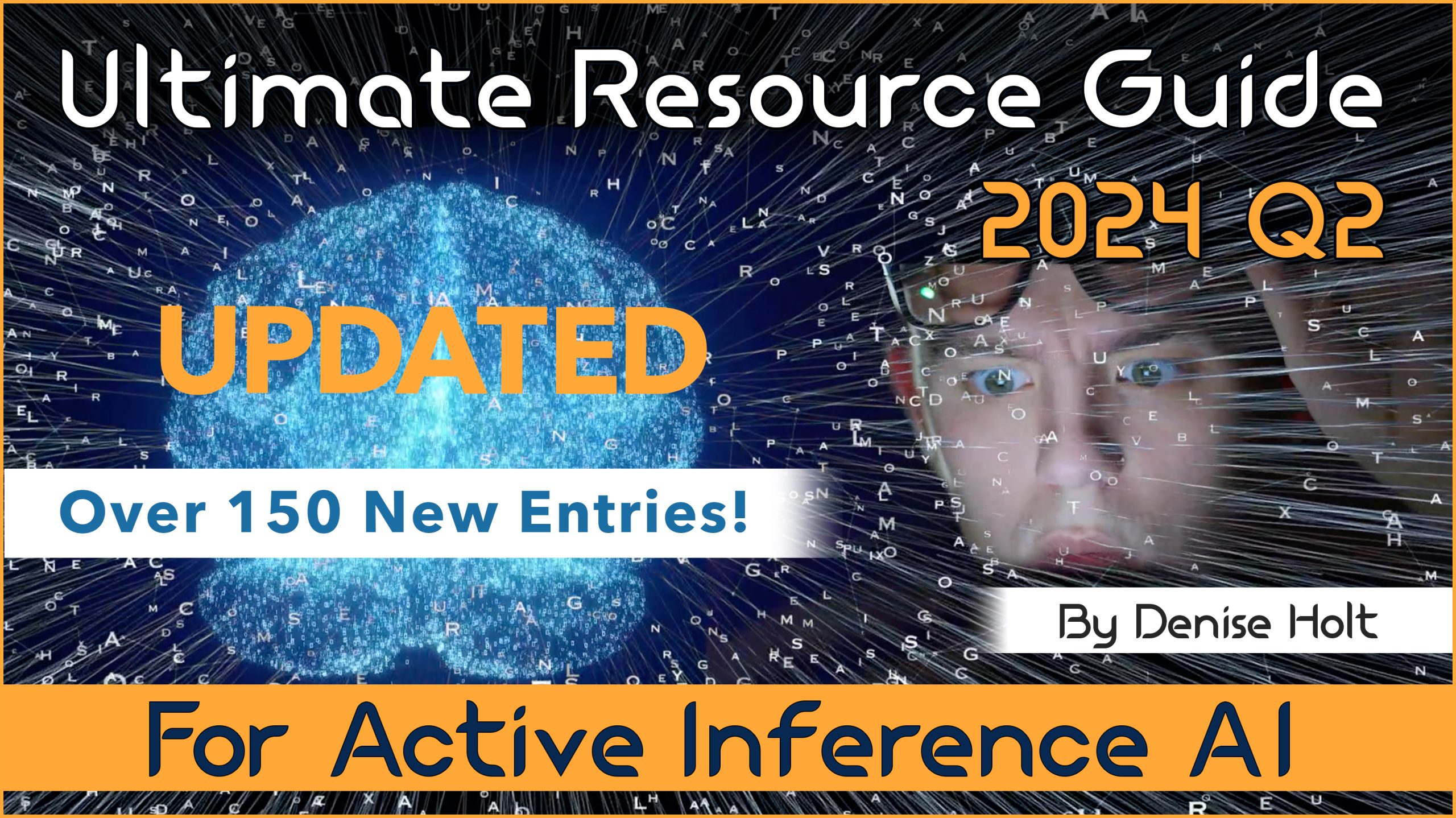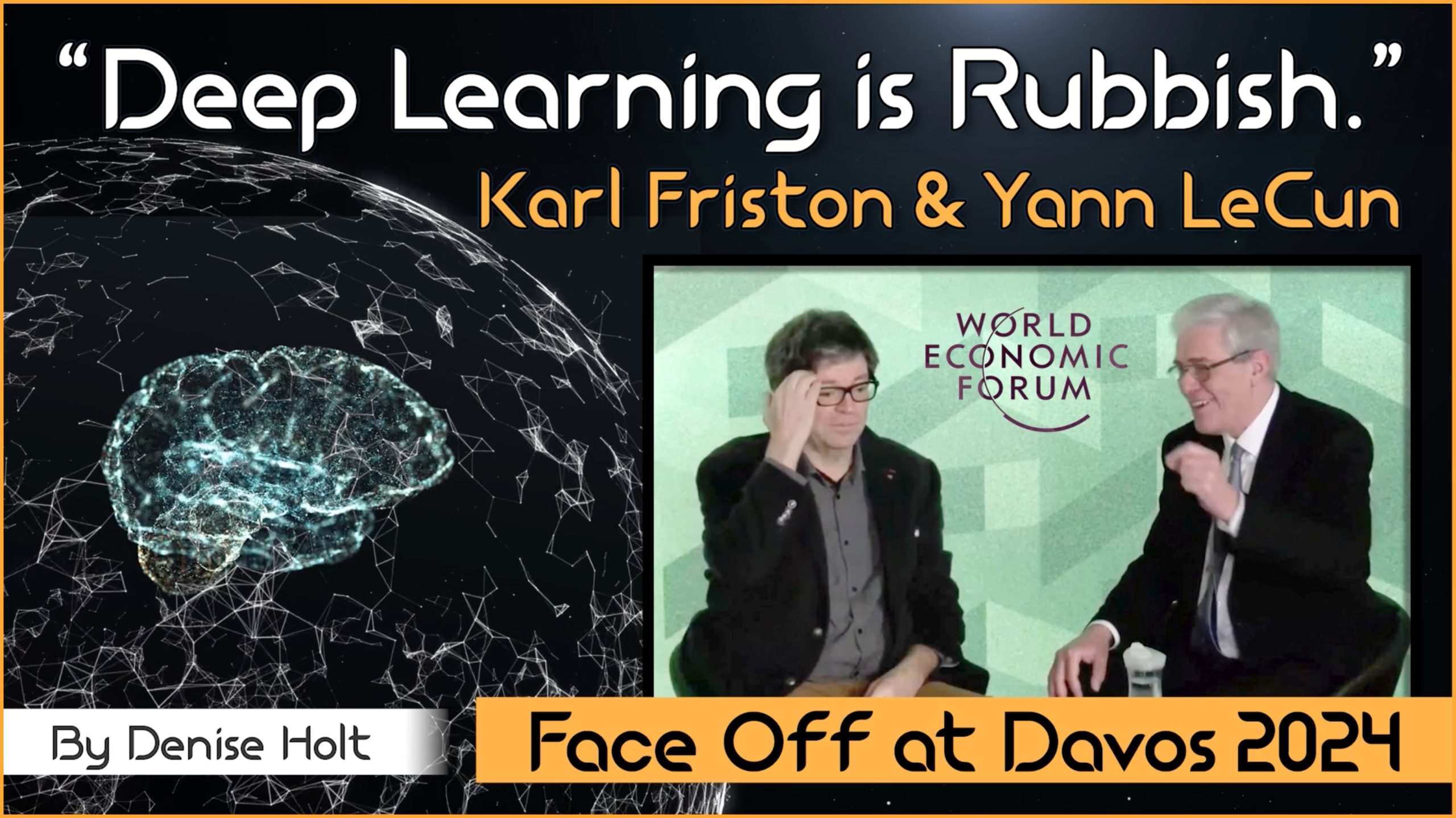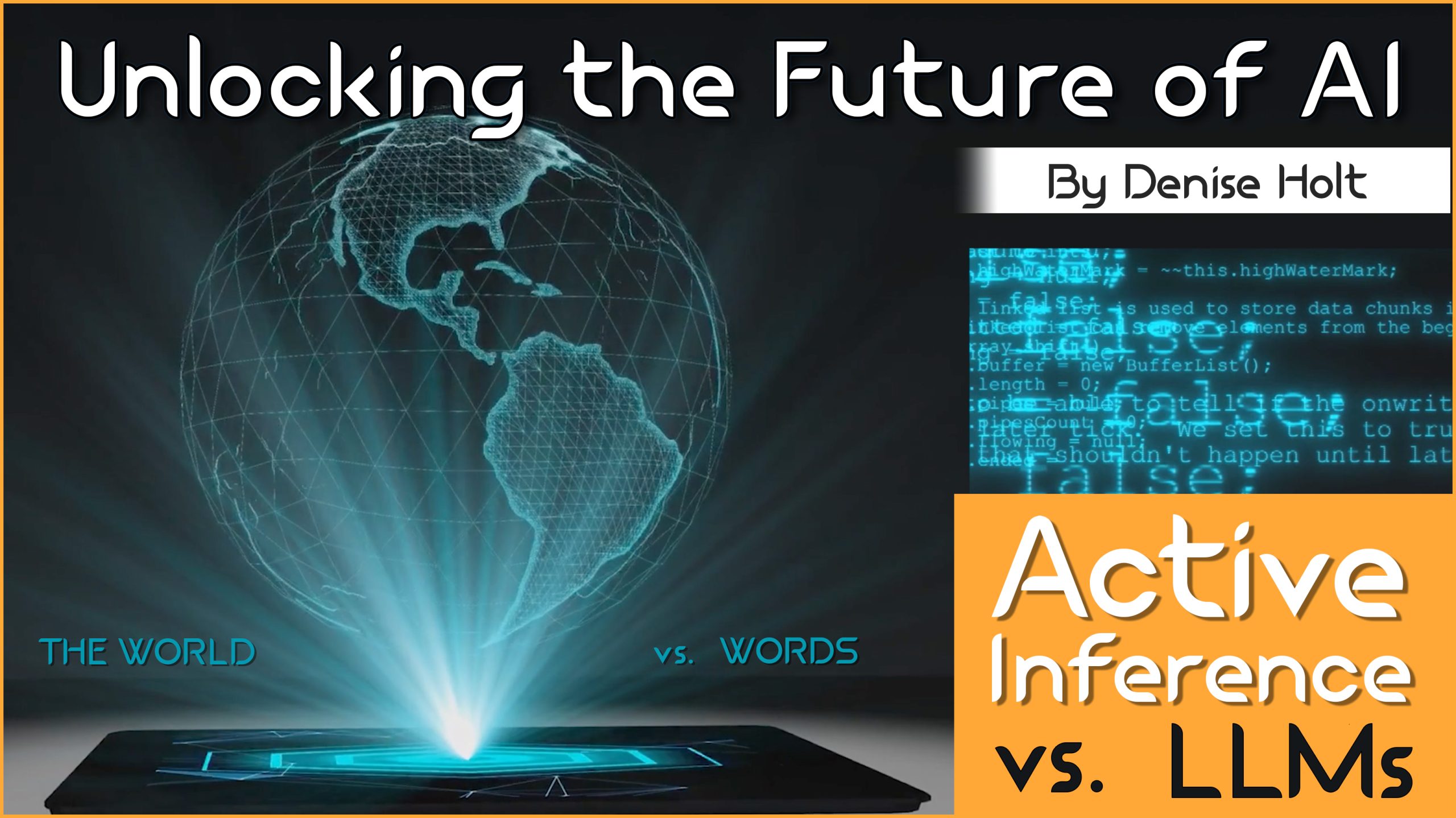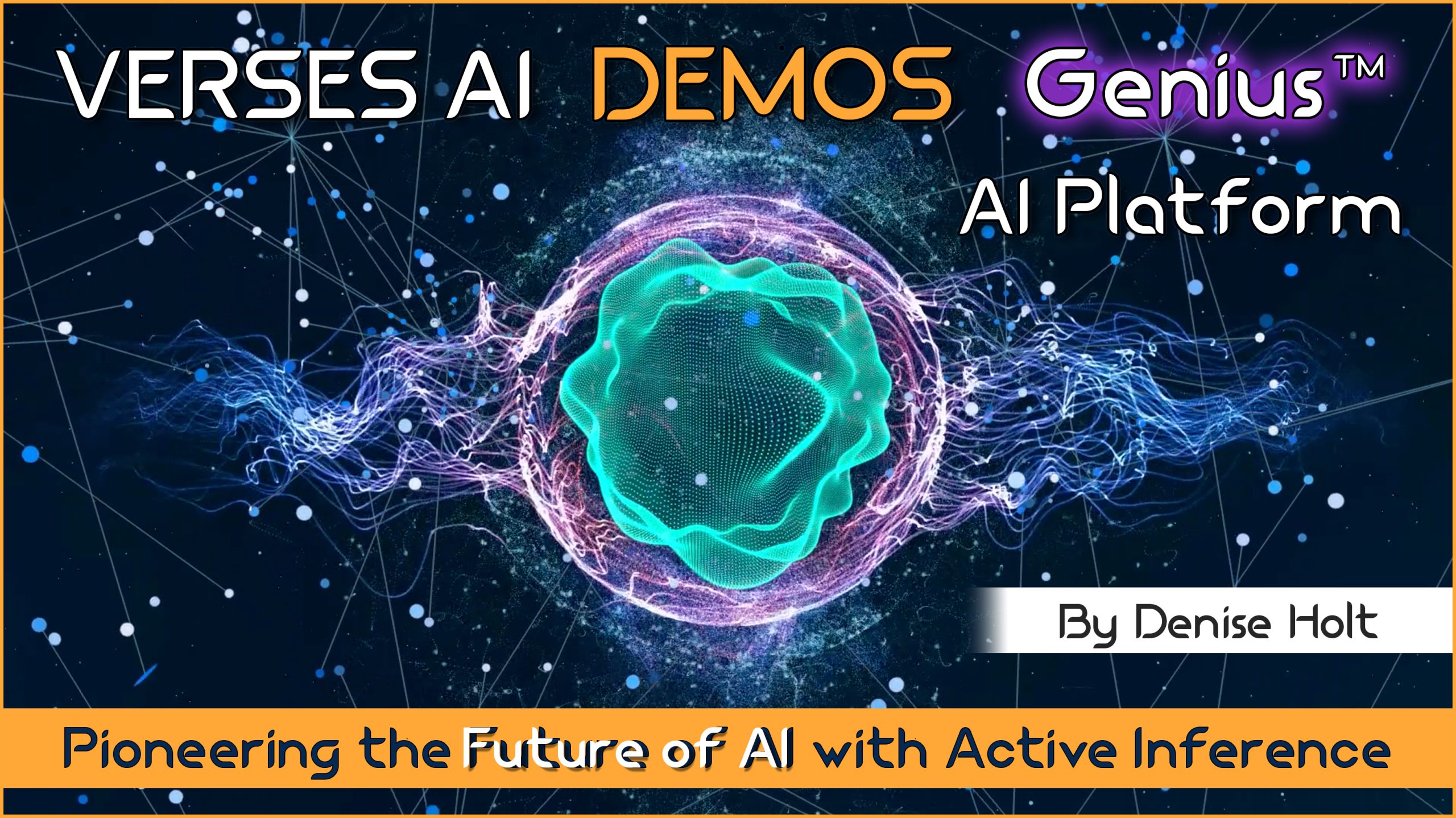
Updated - Over 150 New Entries for 2024 Q2 - Research papers, articles, videos, who to follow, and more! The…

The pioneering goal of Artificial Intelligence has been to understand how humans think. The original idea was to merge intellectual and computer contributions to learn about cognition.
In the 1990’s, a shift took place from a knowledge-driven AI approach to a data-driven AI approach, replacing the original objectives with a type of Machine Learning called Deep Learning, capable of analyzing large amounts of data, drawing conclusions from the results.
Deep Learning is a predictive machine model that operates off of pattern recognition. Some people believe that if you simply feed the model more and more data, then the AI will begin to evolve on its own, eventually reaching AGI (Artificial General Intelligence), the ‘Holy Grail’ of AI.
This theory, however, is viewed as being deeply flawed because these AI machines are not capable of “awareness” or the ability to “reason.” With Machine Learning/Deep Learning AI, there is no “thinking taking place.”
These predictive machines are void of any actual intelligence.
Scaling into bigger models by adding more and more parameters until these models consume the entire internet, will only prove useful to a point.
A larger data bank will not be able to solve for recognizing toxicity within the data structures, nor will it enable the ability to navigate sensitive data, permissioned information, protected identities, or intellectual property. A larger data bank does not enable reasoning or abstract thinking.
For AI to achieve the ultimate goal of AGI we need to be able to construct cognitive models of the world and map ‘meaning’ onto the data. We need a large database of abstract knowledge that can be interpreted by a machine imparting a level of ‘awareness’.
Model Based AI for Active Inference is an Artificial Intelligence methodology that possesses all the ingredients required to achieve the breakthrough to AGI by surpassing all of the fundamental limitations of current Machine Learning/Deep Learning AI.
The difference between Machine Learning AI and Active Inference AI is as stark as the jump from Newton’s Laws of Universal Gravitation to Einstein’s Theory of Relativity.
In the late 1800’s, physicists believed that we had already discovered the laws that govern motion and gravity within our physical universe. Little did they know how naïve Isaac Newton’s ideas were, until Albert Einstein opened mankind’s eyes to spacetime and the totality of existence and reality.
This is what is happening with AI right now.
It’s simply not possible to get to AGI (Artificial General Intelligence) with a machine learning model, but AGI is inevitable with Active Inference.
Deep Learning AI are simply machines (software programs/algorithms) made up of neural networks that become smarter (more refined) machines over time through the process of scaling the data parameters in tandem with the number of training tokens. Basically, the more data that is fed into the machine, the better it gets at recognizing patterns, generating and predicting outcomes that ‘seem’ to be correct.
An artificial neural network (ANN) is an AI algorithm made up of many layered and interconnected processing “nodes,” intended to mimic the structure and behavior of human brain neurons. A node receives input and processes it against a set of weights and biases, producing an output. That output is then passed along as an input to another node, with the process repeating simultaneously throughout the network of nodes until it achieves a final output.
Neural networks are trained using large datasets along with an optimization algorithm to refine the output results and minimize error.
The two common Deep Learning methods used to develop today’s most celebrated AI applications are GAN models (MidJourney and DALL.E) and Transformer models (ChatGPT).
By now, we’ve all seen and heard of programs using Deep Learning AI machines through their many various applications:
The truth is these are just tools. They don’t have any real contribution to cognitive science. They can be very useful tools, but they are also prone to error, and ultimately limited in scope of human-like value.
Current AI programs possess no understanding or meaning regarding tasks they can perform. They are tools with no comprehension, merely predictive machines, trained to do one thing.
It’s important to understand that these machines are not capable of awareness or perception. They don’t understand the data, they just get good at performing tasks based on parameters within the programming of the algorithms.
An AI machine used to scan MRIs to detect cancer does not know what an MRI is, nor what cancer is. It has merely been trained to recognize image patterns based on having been fed extensive datasets of MRI images labeled ‘with’ and ‘without’ cancer. It gets good at recognizing the patterns within the images, but the contents of the images themselves and the context surrounding the task at hand are meaningless. The results can only be offered in percentages of possible accuracy — never 100%.
Some other BIG PROBLEMS:
It’s also important to note that each of these machine models is singular in functional objective. Each is only good at one thing. Whatever operation a particular AI model is programmed and created to “do,” whether it be visual art creation, language processing, or scanning MRIs or X-Rays, each is built to stay in its own lane. ChatGPT cannot create a photographic or graphic image, and DALL.E, although it creates images from text descriptions, it will not write blog articles for you, or answer a question, or tell you a joke.
These are not sentient or all-knowing AI networks, they are predictive model machines, each trained with data to accomplish a pre-determined task. Eventually these datasets will achieve more and more overlap, but they are still bound by the task requests and parameters they are trained within.
Large datasets are used to train these Machine Learning/Deep Learning systems, but due to inherent problems with lack of comprehension and awareness, and the threat of exposing the system to toxic or otherwise potentially damaging data, none of this training data is ‘live’. It is done through Supervised Learning, carefully curated by data scientists.
GPT-2 was trained using 1.5 billion parameters, and GPT-3 was trained with substantially more — 175 billion parameters. However, this data is historical data. It is not live, real-time, evolving data. In fact, ChatGPT-3 was only trained on data through mid-2021, so users who are relying on it to answer questions about technology, for instance, are receiving outdated answers, given the rate of acceleration in technological advancement. A lot of progress takes place over one year.
Another huge issue with these predictive machine models is that it is impossible to audit the path to results. These machines are trained on the datasets, yet, the neural networks are set to crunch the data throughout a process that is both random and obscured within multiple overlapping inputs and outputs until a final outcome is produced that has a high probability of success. Meaning, we have no way to know the internal workings of exactly how it got to its results.
This doesn’t present a problem if you are asking your AI model to win at a chess game. In that case, it doesn’t matter much how it resulted in coming up with the best possible winning move. It simply won.
However, if you have an Neural Net AI model that is being used in the field of medicine, and somehow its training data was flawed, or it erred in its conclusion, wrongly suggesting something like an amputated leg or risky unnecessary operation, then that’s a problem.
Without understanding how the AI model arrived at its decision, there is no way to correct it and prevent the same mistake from occurring in the future.
Keep in mind, these Deep Learning machines are also indifferent to truth. They are not concerned with truth. They are not aware of truth. They are not capable of abstract thought.
These machines are merely trained to output something that closely resembles ‘accuracy’ based on the input received and the random pattern matching sequences that filter out the likelihood of a “failed” answer. This means with Large Language Models like ChatGPT, they are prone to spit out non-sense, as long as it ‘sounds’ plausible and follows the rules with which it has been trained. ChatGPT doesn’t understand what it is saying, only the likelihood of what words should come next.
The more the machine is trained with larger data sets and interaction, the more likely a proper output becomes, but an ‘appropriate’ output is very different from an ‘accurate ‘output, and the odds of accuracy are based on cultivated probability that inherently leaves room for error.
Through this Machine Learning technology, we have engineered some valuable and helpful tools to enhance performance and creativity, but these tools make no real contribution to cognitive science, and due to their inherent limitations, they will never be able to achieve AGI on their own accord.
According to Dr. Gary Marcus, scientist, and leading voice in artificial intelligence, in his predictions for 2023, one of the fundamental ways forward to AGI is the ability to “construct internal models of how the world works” along with the “ability to understand things at an abstract level.” He goes on to predict that the “critical step on the optimal path to AI that we can trust…we will need genuinely new architectures that incorporate explicit knowledge and world models at their very core.”
According to VERSES AI, a cognitive computing company specializing in the next generation of Artificial Intelligence (AI) systems, “The Spatial Web is “an open, hyper-connected, context-aware, governance-based network of humans, machines, and AI.”
The VERSES AI core platform, Genius™ OS Operating System, “is a network operating system that streamlines development and deployment of autonomous applications on the Spatial Web.”
Genius™ OS enables the development and deployment of a new class of hyper-integrated context-aware autonomous applications that support cross-platform networking between disparate hardware (i.e. drones, sensors, smart devices, robots) and software systems (i.e. enterprise services, cloud platforms, mobile applications, artificial intelligence). It is composed of five “Flow Modules” that work in concert to process and synthesize data coming from various IoT sensors and digital information systems into a coherent human-readable and machine-executable structure for purposes of delivering greater intelligence and automation of Human, IoT, AI, and Robotic field activities. “ — VERSES AI
Through global digital twin simulation, Model Based AI for Active Inference occupies an interior representation of the world that is continuously updated in real time, through sensor and camera data, making inferences (decisions) on an ever-improving model.
In this next evolution of the internet, the Spatial Web, also known as the Network of Everything, you have the model (digital twin of every object in every space), and you have the context of everything that the object comes in contact with (encoded into the models through HSML, the context graphing programming language of the Spatial Web Protocol). This new network of Web 3.0 becomes the basis for a truly augmented existence and an entirely new generation of AI and data sharing.
Through HSTP (Hyperspace Transaction Protocol) and HSML (Hyperspace Modeling Language), context is coded into every object — person, place, or thing, whether physical or digital, to define, describe, and categorize distinguishable and evolving traits of any user, object, activity, or protocol in any environment, whether real-world or virtual.
In the Spatial Web, HSML enables computable context based on defining, recording, and tracking the changing details in physical and digital dimensions, social dimensions, meanings, culture, conditions, circumstances, and situations, whether geometrical, geo-political, or geo-social by nature.
The Who, What, When, Where, Why and How of all entities and data within this new network will automatically be knowable and permissionable, enabling AI with a level of adaptive intelligence automation through a knowledge graph based off of the HSML modeling classifications, able to distinguish the contingencies and interrelationships between these elements, creating computable context that is easily understood and processed for every object in space and over time.
Active Inference ‘decision making’ Artificial Intelligence operates within the entire Spatial Web ecosystem as nested hierarchies based on the Free Energy Principle, developed by renowned theoretical neuroscientist, Dr Karl Friston, Chief Scientist at Verses AI and VERSES Artificial Intelligence Lab and Sensor Fusion Research Facility.
Ranked #1 most influential neuroscientist in the world by Semantic Scholar in 2016, Dr. Friston is one of the most acclaimed and cited scientists in the field of Computational Neuroscience and Artificial Intelligence. Additionally, he is the world’s leading expert in the development and application of Active Inference, a biologically inspired approach to AI.
Active Inference, applied to Artificial Intelligence, is a method for understanding sentient behavior incorporating the brain, cognition, and behavior, modeled after the design principles from nature for how the brain, nervous system and body act and react.
Active Inference AI within the Spatial Web on the Genius™ Platform, operates within a holonic structure of nested Spatial Domains.
Holon architecture can be described whereas something can be a ‘whole’ in and of itself, yet also be a part of something greater. For example, a human heart is made of cells. Those cells are ‘whole’ cells, while still being ‘part’ of the heart, which is a ‘whole’ heart, yet ‘part’ of the human body. Each component exists as a whole element that is also part of the entire organism, situated as nested entities within each other that are governed by the rules of the greater influencing organism, and similarly inherited and passed to the internal parts nested within it, with each part having its own governmental considerations for its specific intrinsic requirements.
Additionally, Active Inference includes the principle of Markov Blankets at each level of analysis, defining boundaries acting as partitions to mediate the interactions between the ‘internal’ and ‘external’ states of a single unit, region, or entire complex network, resulting in a self-organizing system.
One example of how this may play out in the Spatial Web, there may be a factory that is part of a supply chain with raw materials feeding into it from various locations, mines, etc.., The factory then produces finished goods that ship to another destination like a distribution warehouse.
Just as that factory is an object within a larger ecosystem of the global supply chain, every object within the factory belongs to its internal ecosystem. You have an internal and an external ecosystem which simultaneously operate according to individual internal and external standards, interdependencies and interrelationships.
Every object within the entire Spatial Web network is part of an interrelated ecosystem that feeds a continuous stream of real time context between all points in space and time.
This continual interaction and communication stream takes note of all nuances and changes within the relationship between all objects and the parameters that govern them.
Model Based AI for Active Inference becomes a global Artificial Intelligence organism comprised of nested AIs, referred to as Intelligent Agents, that inhabit the Spatial Web through the Genius™ OS platform, living on the network and updating in real time.
Due to its very nature, Active Inference AI is fully auditable with the foundations of all its decisions completely knowable and precisely controllable.
Additionally, Active Inference AI inside of Genius™ has access to the entire Spatial Web with IoT sensors and cameras and all context markers attached to all objects within all space and time. This AI becomes an ecosystem of Intelligent Agents that are all interoperable over HSTP. This Collective Intelligence is trained on realtime data and evolves making decisions and updating its interior model based on what is happening NOW, not on historical datasets.
This is the missing piece of the data puzzle that gets us to Artificial General Intelligence. We now have the world model, and we now possess the ability for continuous and adaptive context markers enabling a cognitive model of this world and the ability to compute awareness.
“For the first time in history, starting now, we have the roadmap. AGI is now possible.” — Dan Mapes, President, and Co-Founder, VERSES AI, and Director of The Spatial Web Foundation
VERSES AI, and the Spatial Web Foundation, is on target to get us there.
This is Part 1 of a three-part series entitled, The Spatial Web and the Era of AI.
Next up, in Part 2, we gain a more thorough understanding of Active Inference AI and Dr. Karl Friston, then we will dive deep into the intricacies of the Genius™ Operating System in Part 3 of this series. — Enjoy the ride!
To learn more about the Spatial Web Protocol and the evolution of Web 3.0, visit SpatialWebFoundation.org
All content on this site is independently created by Denise Holt. If you enjoy this content, please consider supporting my efforts at patreon.com/SpatialWebAI

Updated - Over 150 New Entries for 2024 Q2 - Research papers, articles, videos, who to follow, and more! The…

VERSES AI has unveiled a groundbreaking framework that "sets the stage" for ASI, and could have profound implications for the…

In a panel hosted by the Financial Times at the World Economic Forum in Davos, Switzerland, two of the biggest…

The Most Complete Repository of Research Links and Educational Content on the VERSES AI Technology & Active Inference AI This…

Computing is changing on every basic and fundamental level. Generative AI is one piece of that computing puzzle. It’s a…

A pivotal roundtable discussion held by the Boston Global Forum, the Active Inference Institute, and the Neuropsychiatry and Society Program…

In an unprecedented move by VERSES AI, today's announcement of a breakthrough revealing a new path to AGI based on…

In a world where AI reigns supreme, there is a question looming among the tech elite: Are we on the…

"What you're about to see is akin to, I believe, a moment like the launch of the first rocket or…